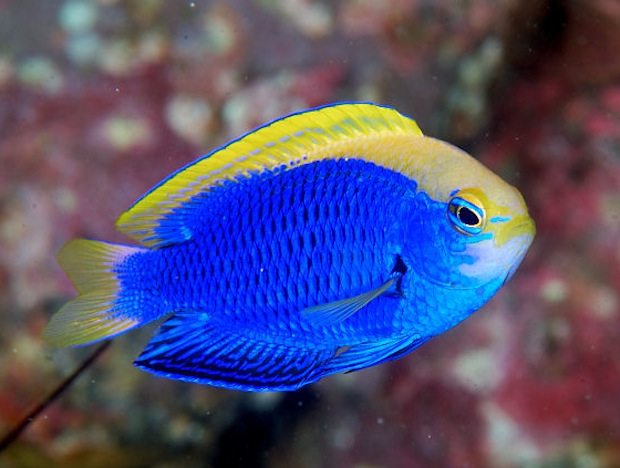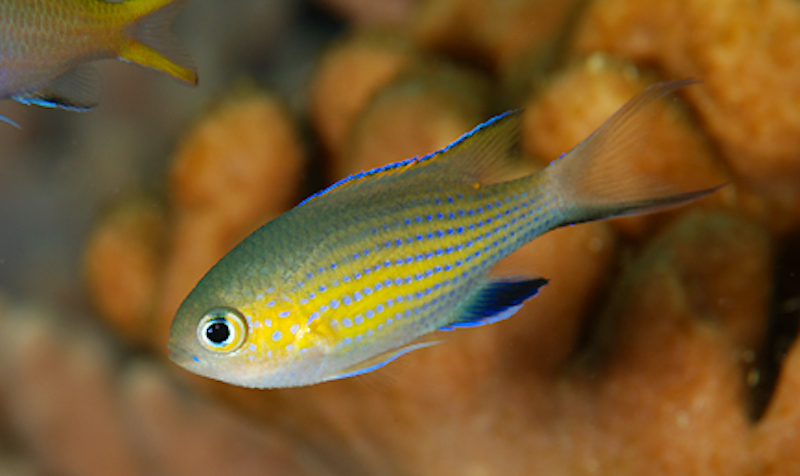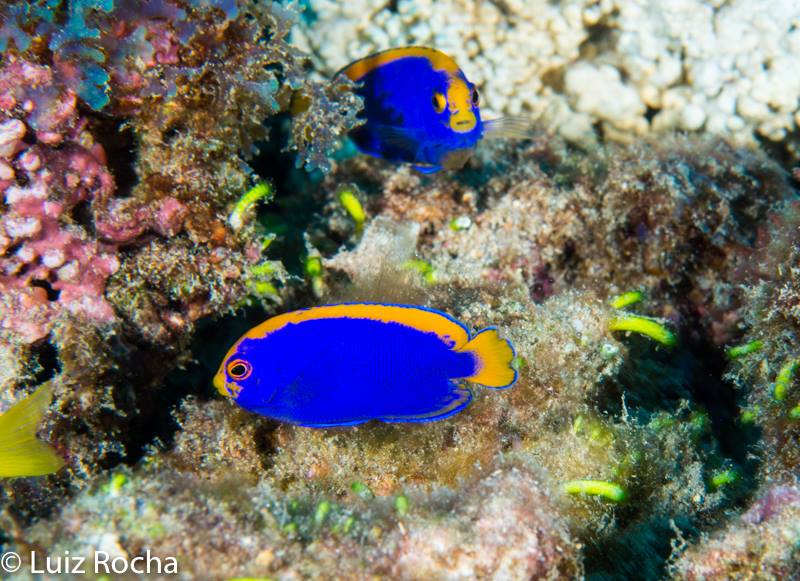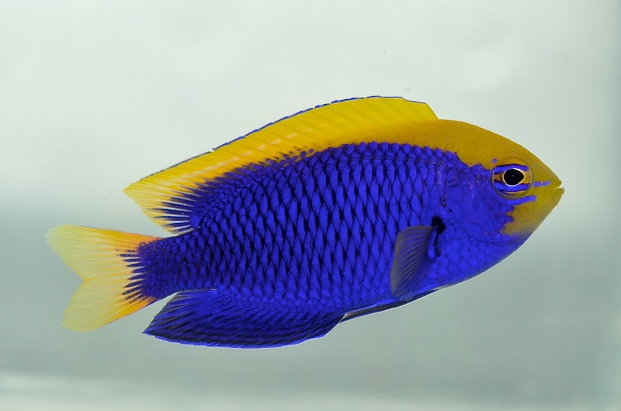We’ve always had a soft spot for damselfish since they were our first saltwater fish over 25 years ago. We still like their bold colors, cichlid-like looks, and behavior, and still add them to our reef tanks even now. Sure, we avoid Domino damsels and Sergeant majors, but wouldn’t rule out every damsel species these days, as when compared to introducing territorial Purple tangs or large angelfish species to each other, they’re really not that bad. Not if they’re managed properly…

So recently we had an opening for some damsels in our home tank and instead of opting for ubiquitous Chromis viridis and perhaps, Chrysiptera parasema, we pushed the boat out and invested in Chromis vanderbilti and Chrysiptera starcki instead. The Chromis did what Chromis do and quickly whittled their numbers down from a group of six to just two, proving to be rather boisterous fish as Chromis go, and judging by differences in the caudal fin extensions they condensed their own numbers down to a single, sexed pair. The “Vanderbilts” have toned their color right down too and look dark gray from a distance. Chromis vanderbilti also moved genus to Pycnochromis in 2021, but despite that revision, ours are looking more and more like the Blacktail Chromis, Chromis nigrura, that replaces them in the Pacific. The fish we’ve been really impressed with however is the Starck’s damselfish.

Model Citizens
If you want a blue and yellow damselfish then the Chrysiptera genus has dozens of species, many of which are widely available and cheap, but this time we wanted to up the anti and seek out a Starck’s. More Royal blue than electric blue, the Starcki damselfish is unusual enough to get our attention, and with some scientific interest in the two geographically distinct populations from the Philippines and Australia, we got one when it appeared at the wholesalers.
In terms of behavior, this Starcki has been a model saltwater aquarium citizen, being not as grumpy as the resident Clark’s clowns or even the chromis, the Clarkii blaming the starcki, and taking a chunk of its tail fin, when we pruned (and removed,) their pulsing xenia home.
But what we’ve really been impressed with is how it’s developed in body shape and coloration, just being fed on a diet of pellets. That blue, with yellow dorsal stripe, always reminded us of a Resplendent Angelfish, Centropyge resplendens, and we’ve even heard it referred to as the Poor Man’s Resplendent Angelfish once, and it is a handsome fish indeed. We consider it more the slightly better off man’s blue damsel, (or woman’s,) and although a couple of notches up in price from a standard Blue devil, the Starck’s has repaid us in color, ease of keeping, lack of aggression, and behavior.

Finding a pair
We still work with many species of Chrysiptera and just like with cichlids, most of the time it’s better to let a pair form out of a group in a store’s tank. The pairs are easy to spot as they will be guarding a rock, whereas all the rest will be looking ragged and panting in a corner. As with the Chromis pair, this sadly is common behavior, although due to their price and relative scarcity, we haven’t ever seen groups of Starcki damsels being held together in order to pick out a mated pair. It’s important to enable our saltwater aquarium fish to live out full lives wherever possible, so we are tempted to add another Starcki to the tank, cross our fingers, and see what happens, but if they do pair they will no doubt take territory and then prevent any useful fish like wrasses and surgeonfish from attending to the rock and corals they will inadvertently be defending. So we’ll see, but for now, our Resplendent-looking Starcki damsel is one of the stars of the tank.



